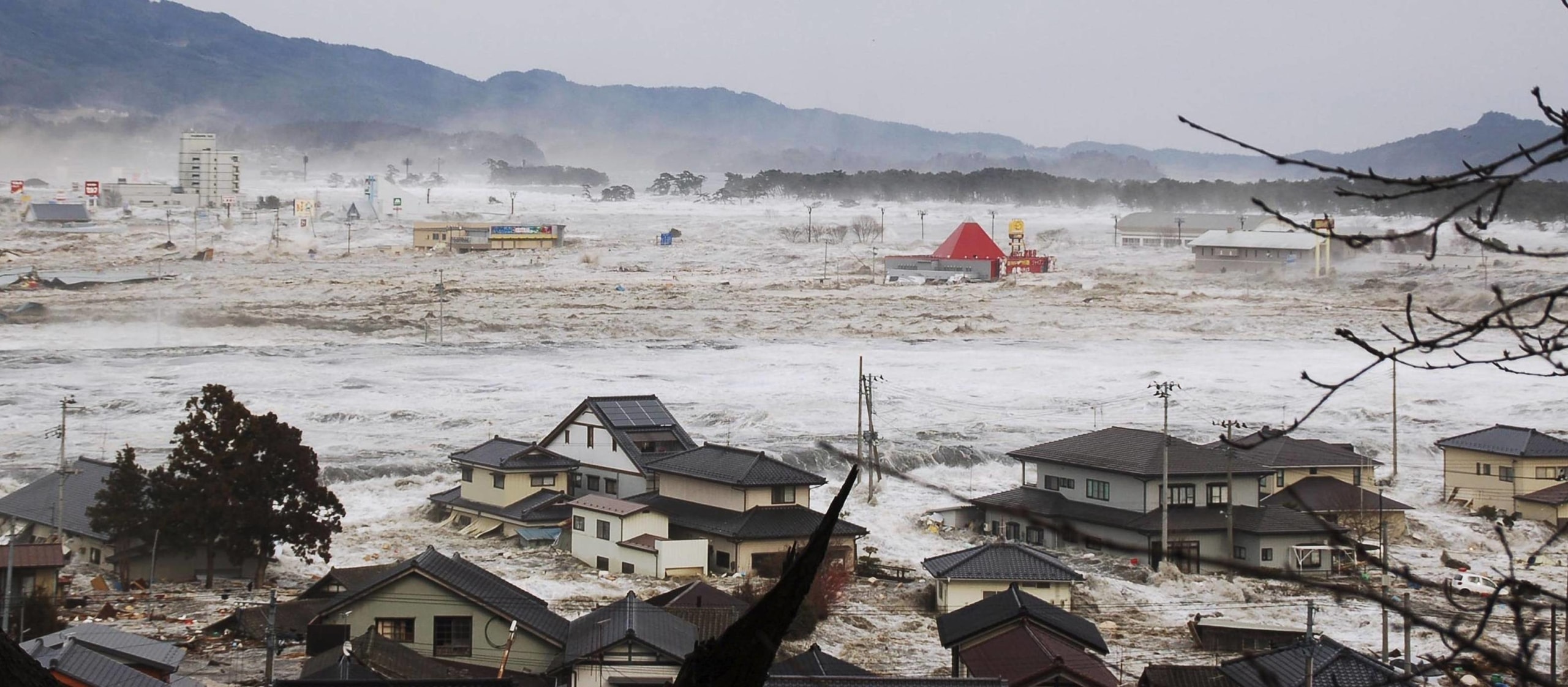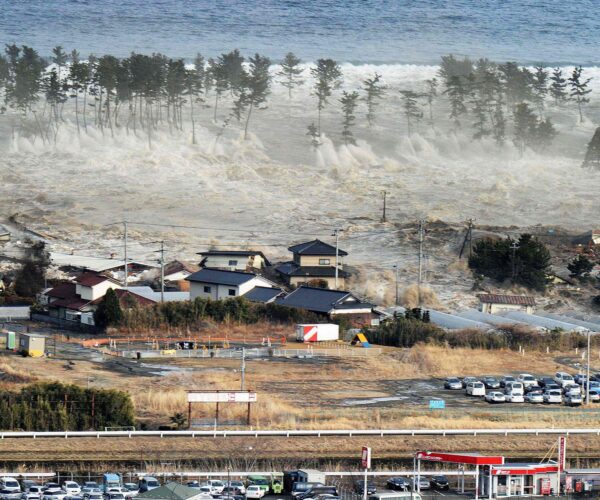On March 11, 2011, a tsunami hits the city of Natori in Japan after a powerful earthquake. Photo Credit: Kyodo News / AP file
Today, March 11, marks the 10th anniversary of the powerful earthquake of magnitude 9.1 on the Richter scale that originated 370 km northeast of Japan and at a depth of 30 km, resulting in a devastating tsunami, fires and a serious nuclear crisis at the Fukushima power plant, seriously affecting several areas of Japan, including the capital and various parts of the territory.
This incident known as The Great East Earthquake and Tsunami, was the most powerful earthquake suffered in Japan to date, and at the same time, the fourth most powerful worldwide in the last 500 years, being described as an event that only happens once every several thousand years or so. This area of Japan, which is called Tohoku, is known for its frequent tsunami attacks, such as the Keicho Tsunami of 1611 with waves traveling up to 4 km inland, or also the Meiji-Sanriku and Showa tsunamis -Sanriku from 1896 and 1933, respectively.
The Pacific Tsunami Warning Center, operated by NOAA, issued a tsunami warning for the Pacific Ocean, spanning from Japan to the United States. About an hour after the earthquake, waves up to 10 meters high hit the coast of the Nippon country, taking with them multiple buildings, structures, vehicles and human lives, with 15,893 deaths being confirmed, 2,556 missing persons and 6,152 across various prefectures in Japan, of which around 12,000 people died from drowning.
 The city of Rikuzentakata, Iwate Prefecture, is flooded after an earthquake-triggered tsunami swept away the area. Photo Credit: Kyodo News
The city of Rikuzentakata, Iwate Prefecture, is flooded after an earthquake-triggered tsunami swept away the area. Photo Credit: Kyodo News
While the tsunami alert was generated for the Pacific coast of Japan, alerts were generated in several other countries, such as New Zealand, Russia, Guam, Australia Philippines, Nauru, Papua New Guinea, Indonesia, Hawaii, Mariana Islands of the North, Taiwan, United States, Alaska, Canada, Mexico as well as South America, Peru, Ecuador, Chile and Colombia.
None of the countries mentioned suffered retaliation from the tsunami as much as Japan. In the state of California on the west coast of the United States, a state of emergency was declared for the four northern counties affected by the tsunami, whose impact left extensive damage to ports and beaches.
Based on the extensive damage that took place, tsunami investigations were intensified. Before the tsunami that occurred in the Indian Ocean in 2004, there were relatively few studies on tsunamis, and although after this event the investigations intensified in different parts of the world, the degree of interest began to wane due to the tsunamis that They followed caused only local damage rather than on an international scale, such as the tsunamis in Chile and Indonesia in 2010.
 Waves approach Miyako City after a 9.0 magnitude earthquake hit Japan. Photo Credit: Mainichi Shimbun / Reuters file
Waves approach Miyako City after a 9.0 magnitude earthquake hit Japan. Photo Credit: Mainichi Shimbun / Reuters file
With the tsunami in Japan and its large scale in 2011, investigations and preventive measures were exponentially increased in many countries of the world.
Even with physical means to prevent a tsunami, one can never be stopped completely. There is a need for a coordinated system that can warn with enough time the arrival of a tsunami so that the respective authorities take the necessary security measures and safeguard as many lives as possible.

